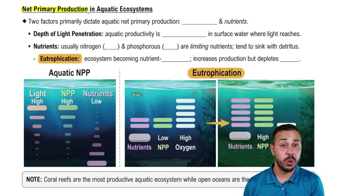Predict how a mutation that caused continuous production of active p53 would affect the cell.
The Hawaiian bobtail squid (Euprymna scolopes) is able to glow from luminescent Vibrio fischeri bacteria held in its light organs. As it swims at night near the ocean surface, it adjusts the amount of light visible to predators below to match the light from the stars and moon. Predators have difficulty seeing the illuminated squid against the night sky. The bacteria glow in response to a molecule that regulates expression of genes involved in light-producing chemical reactions. The regulator controls production of the genes' mRNA. Therefore, the light-producing genes are under a. transcriptional control. b. translational control. c. post-translational control. d. negative control.
 Verified step by step guidance
Verified step by step guidance
Verified Solution
Key Concepts
Transcriptional Control

mRNA and Gene Expression

Light Production in Bioluminescence

In the follow-up work to the experiment shown in Figure 19.6, the researchers used a technique that allowed them to see if two DNA sequences are in close physical proximity (association). They applied this method to examine how often an enhancer and the core promoter of the Hnf4a regulatory gene were near each other. A logical prediction is that compared with rats born to mothers fed a healthy diet, the Hnf4a gene in rats born to mothers fed a protein-poor diet would a. show no difference in how often the promoter and enhancer associated. b. never show any promoter–enhancer association. c. show a lower frequency of promoter–enhancer association. d. show a higher frequency of promoter–enhancer association.
One hypothesis for differences between humans and chimpanzees involves differences in gene regulation. A study using RNA-seq showed that the overall patterns of gene expression were similar in the liver and blood of the two species, but the expression patterns were strikingly different in the brain. How do these results relate to the hypothesis?
